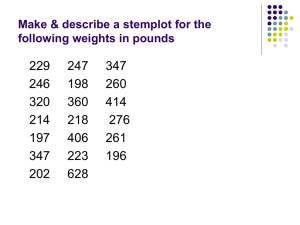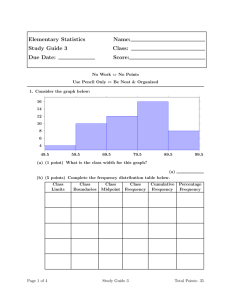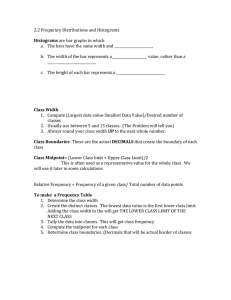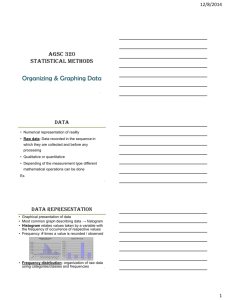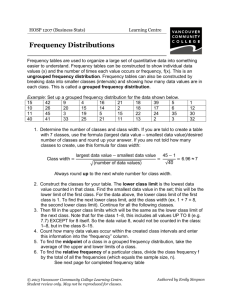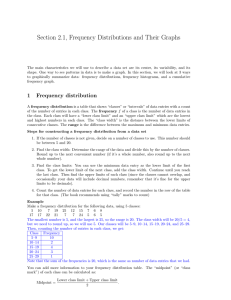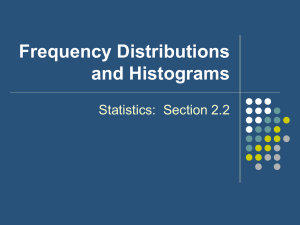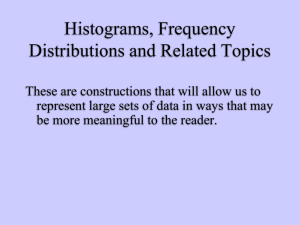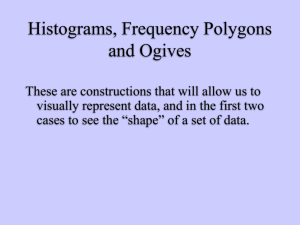To build a Frequency Table: Sturge's Rule
advertisement
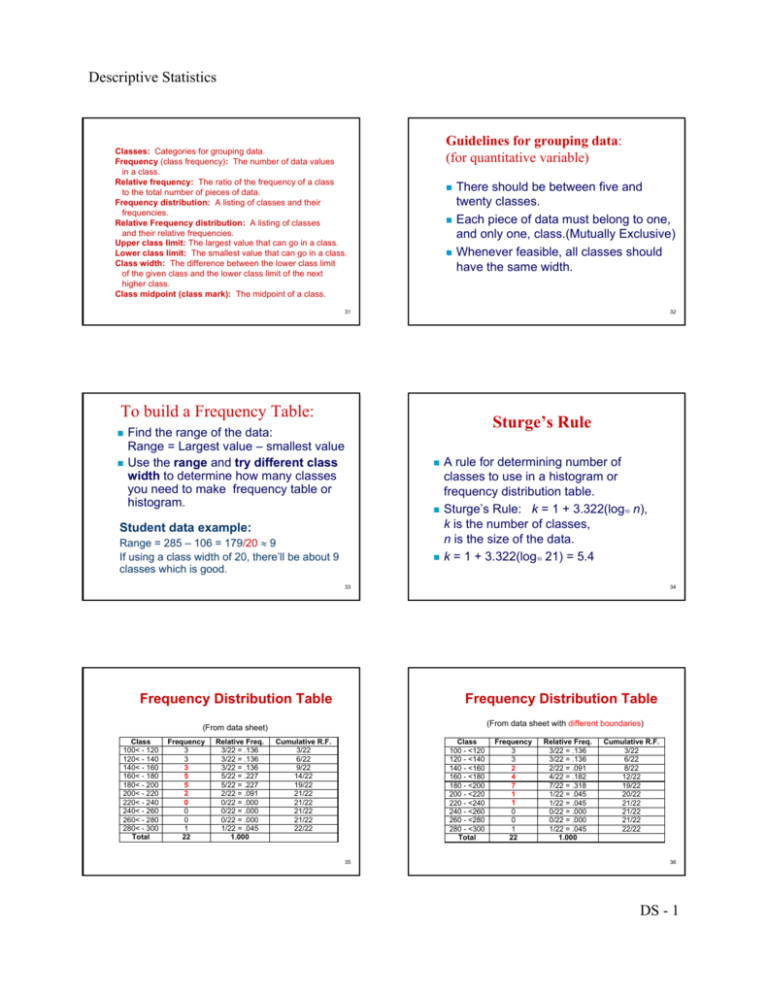
Descriptive Statistics Guidelines for grouping data: (for quantitative variable) Classes: Categories for grouping data. Frequency (class frequency): The number of data values in a class. Relative frequency: The ratio of the frequency of a class to the total number of pieces of data. Frequency distribution: A listing of classes and their frequencies. Relative Frequency distribution: A listing of classes and their relative frequencies. Upper class limit: The largest value that can go in a class. Lower class limit: The smallest value that can go in a class. Class width: The difference between the lower class limit of the given class and the lower class limit of the next higher class. Class midpoint (class mark): The midpoint of a class. There should be between five and twenty classes. Each piece of data must belong to one, and only one, class.(Mutually Exclusive) Whenever feasible, all classes should have the same width. 31 32 To build a Frequency Table: Sturge’s Rule Find the range of the data: Range = Largest value – smallest value Use the range and try different class width to determine how many classes you need to make frequency table or histogram. Student data example: Range = 285 – 106 = 179/20 ≈ 9 If using a class width of 20, there’ll be about 9 classes which is good. A rule for determining number of classes to use in a histogram or frequency distribution table. Sturge’s Rule: k = 1 + 3.322(log n), k is the number of classes, n is the size of the data. k = 1 + 3.322(log 21) = 5.4 10 10 33 Frequency Distribution Table 34 Frequency Distribution Table (From data sheet with different boundaries) (From data sheet) Class 100< - 120 120< - 140 140< - 160 160< - 180 180< - 200 200< - 220 220< - 240 240< - 260 260< - 280 280< - 300 Total Frequency 3 3 3 5 5 2 0 0 0 1 22 Relative Freq. 3/22 = .136 3/22 = .136 3/22 = .136 5/22 = .227 5/22 = .227 2/22 = .091 0/22 = .000 0/22 = .000 0/22 = .000 1/22 = .045 1.000 Cumulative R.F. 3/22 6/22 9/22 14/22 19/22 21/22 21/22 21/22 21/22 22/22 Class 100 - <120 120 - <140 140 - <160 160 - <180 180 - <200 200 - <220 220 - <240 240 - <260 260 - <280 280 - <300 Total 35 Frequency 3 3 2 4 7 1 1 0 0 1 22 Relative Freq. 3/22 = .136 3/22 = .136 2/22 = .091 4/22 = .182 7/22 = .318 1/22 = .045 1/22 = .045 0/22 = .000 0/22 = .000 1/22 = .045 1.000 Cumulative R.F. 3/22 6/22 8/22 12/22 19/22 20/22 21/22 21/22 21/22 22/22 36 DS - 1
